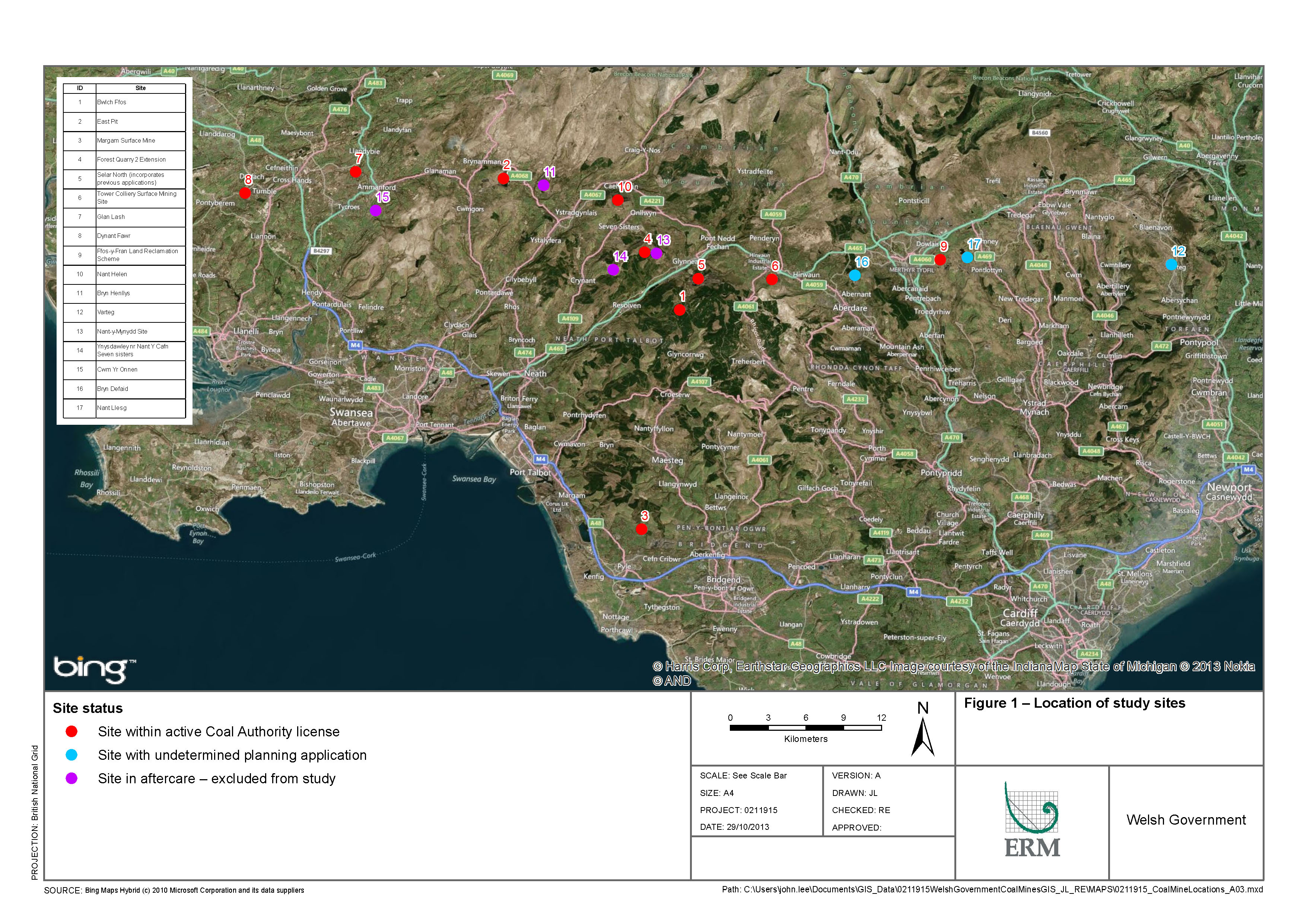Article by Graham Winter, National Assembly for Wales Research Service
Opencast coal mining activity is particularly concentrated in the South Wales coalfield as the map below shows. A research study commissioned by the Welsh Government identified 10 active sites and 3 additional sites where planning permission was being sought at the end of 2013. One of these (Bryn Defaid, Llwydcoed) has since been approved, one (Nant Llesg) is still pending, whilst the third (Varteg) was rejected but a new application has now been submitted. The Coal Authority owns the vast majority of coal in Great Britain, as well as former coal mines. New sites for opencast working have to be licenced by the Coal Authority before any work can commence. Responsibility for this licencing is therefore not currently a devolved area.
The Coal Authority owns the vast majority of coal in Great Britain, as well as former coal mines. New sites for opencast working have to be licenced by the Coal Authority before any work can commence. Responsibility for this licencing is therefore not currently a devolved area.
Opencast sites also require planning permission from the local planning authority (the 22 Unitary Authorities and 3 National Park Authorities). All planning applications must be decided according to the policies set out in the adopted Local Development Plan (LDP), unless good planning reasons (known as "material considerations") dictate otherwise. The LDPs themselves should reflect national planning policies produced by the Welsh Government.
National Planning policy for opencast mining sites comprises Minerals Planning Policy Wales (MPPW) published in 2001 and Minerals Technical Advice Note 2, Coal published in 2009.
MPPW describes how "buffer zones" can be used by local planning authorities to provide areas of protection around permitted and proposed mineral workings. Within these zones new development, which would be sensitive to adverse impact, such as residential areas, hospitals, schools, should be resisted. There should also normally be no new mineral extraction.
MPPW also deals with the achievement of restoration, aftercare and beneficial after-use including financial guarantees. The stated aim regarding restoration is "to achieve a high standard of restoration and aftercare, and provide for beneficial after-uses when mineral working has ceased". Aftercare should be achieved through the use of planning conditions and legal agreements.
MTAN2 provides more detailed guidance specifically related to coal. On buffer zones the guidance note says that they must be clearly defined and indicated in LDPs. The local planning authority will show buffer zones on the plan’s "Proposals Map", as 500 metres around permitted or proposed working, from the site boundary, unless there are exceptional circumstances.
The exceptional circumstances for allowing development within a buffer zone in MTAN2 include:
- Where coal working provides the most effective solution to prevent risks to health and safety arising from previous mineral working;
- To remediate land damaged by shallow coal workings or mine waste;
- Where coal extraction appears to be the most sustainable option;
- Where topography, natural features such as woodland, or existing development, would significantly and demonstrably mitigate impacts;
- Where major roads or railways lie between the settlement and the proposed operational area;
- Where the surface expression of underground working does not include the significant handling or storage of the mineral or waste;
- When the proposal is of overriding significance for regeneration, employment and economy in the local area; or
- Where extraction would be in advance of other, permanent, development which cannot reasonably be located elsewhere.
MTAN2 also contains a section on restoration and aftercare titled ‘Achieving a high standard of restoration, aftercare, and after-use’. It says that formal reclamation (or restoration) schemes should:
- Be discussed with the Local Planning Authority and the statutory consultees before submitting the planning application;
- Be subject to a feasibility study;
- Accompany the planning application;
- Be well-designed;
- Indicate how restoration and aftercare is to be integrated with the working scheme;
- Demonstrate the suitability of the proposed after-use;
- Give consideration to the potential impacts of the reclamation proposals on adjacent land;
- Be suitable for the intended after-use;
- Generally compatible in nature and scale with the natural landform of the area;
- Not be liable to slope instability or other ground movement;
- Include a management plan; and
- Be agreed and included in planning conditions and agreements, with a detailed specification of works.
The Welsh Government can ‘call-in’ certain applications and decide them, rather than the Local Planning Authority. The Welsh Government has the power to specify certain types of development that must be notified to the Welsh Ministers for consideration of ‘call in’, before a permission is issued, if an authority is minded to approve this development. Since July 2012 this Direction has included "the winning and working of minerals to be carried out and the development is not in accordance with one or more provisions of the development plan in force." However it does not specifically refer to notifying the Welsh Government about opencast coal applications that fall within a buffer zone. The Welsh Government did issue a new Direction in February 2015 for all oil and gas applications where unconventional extraction techniques such as fracking are proposed.






